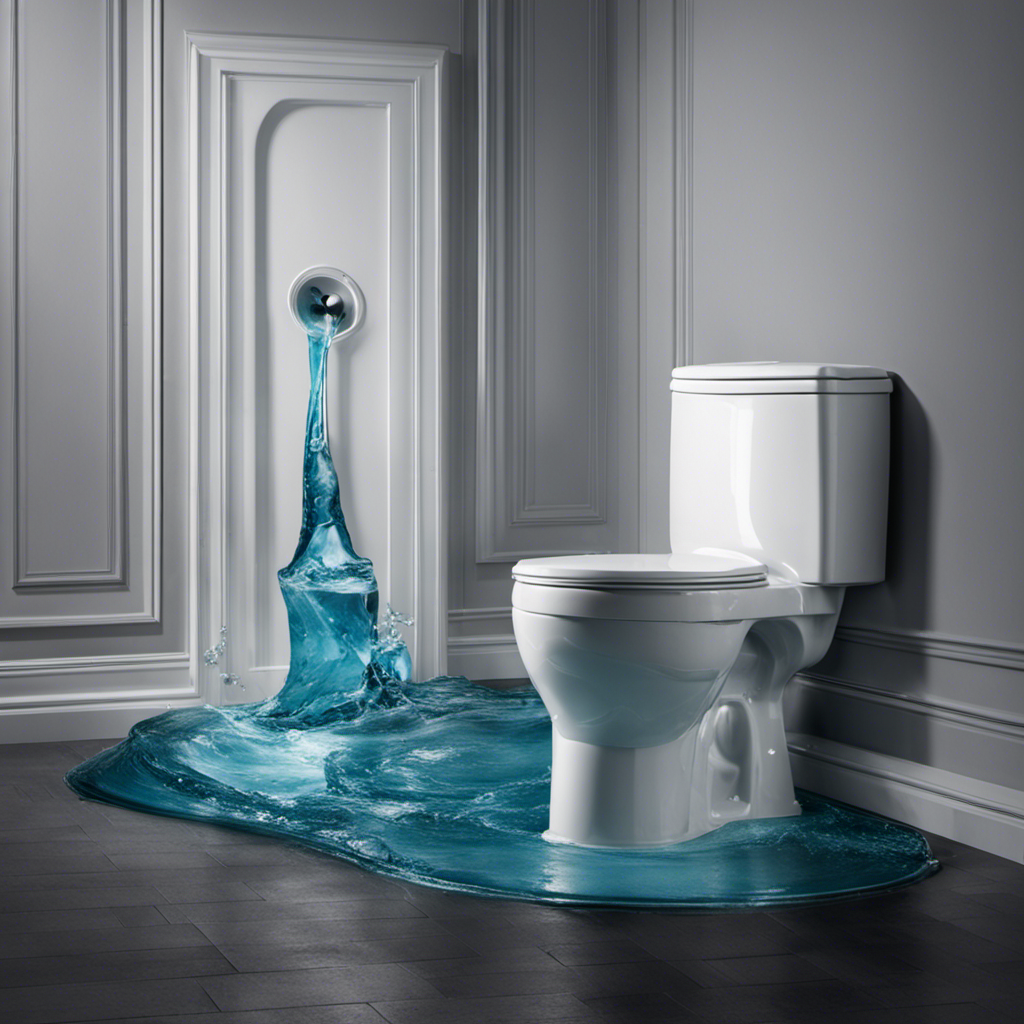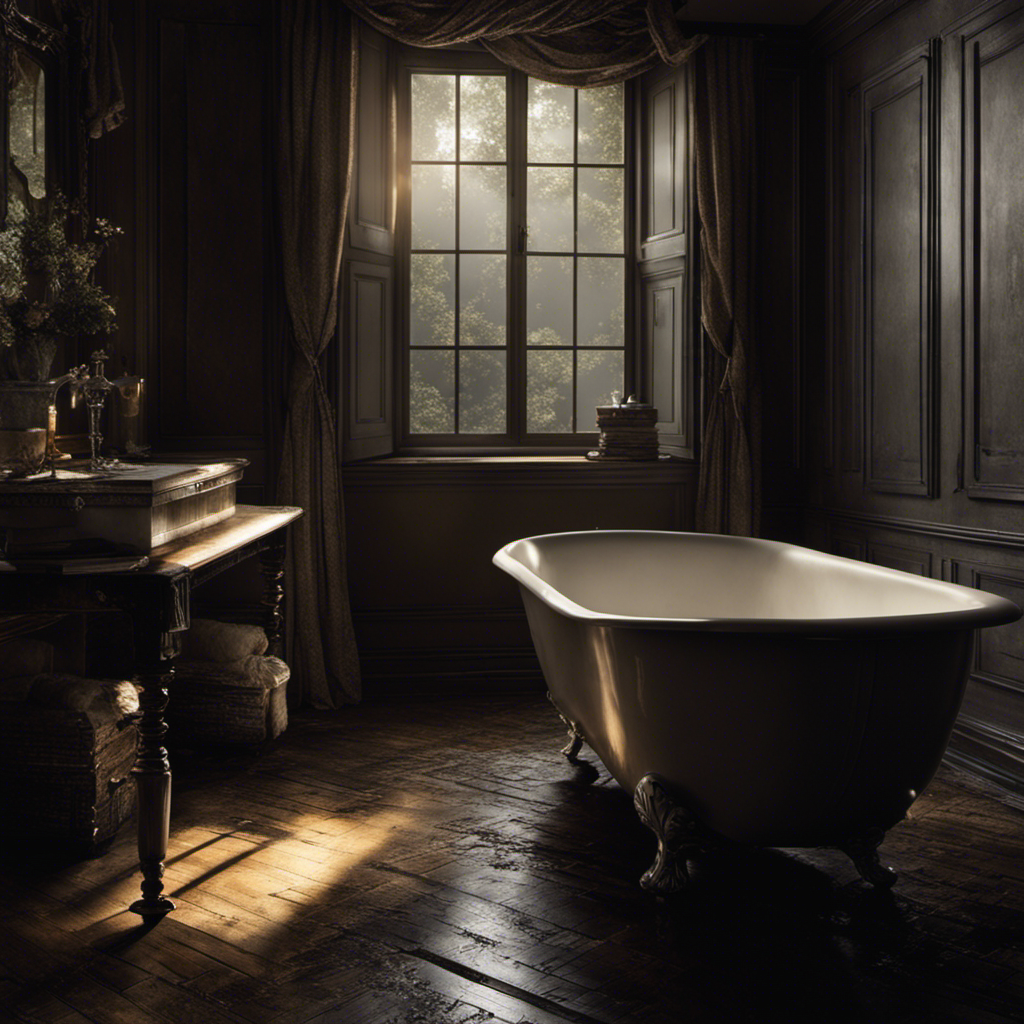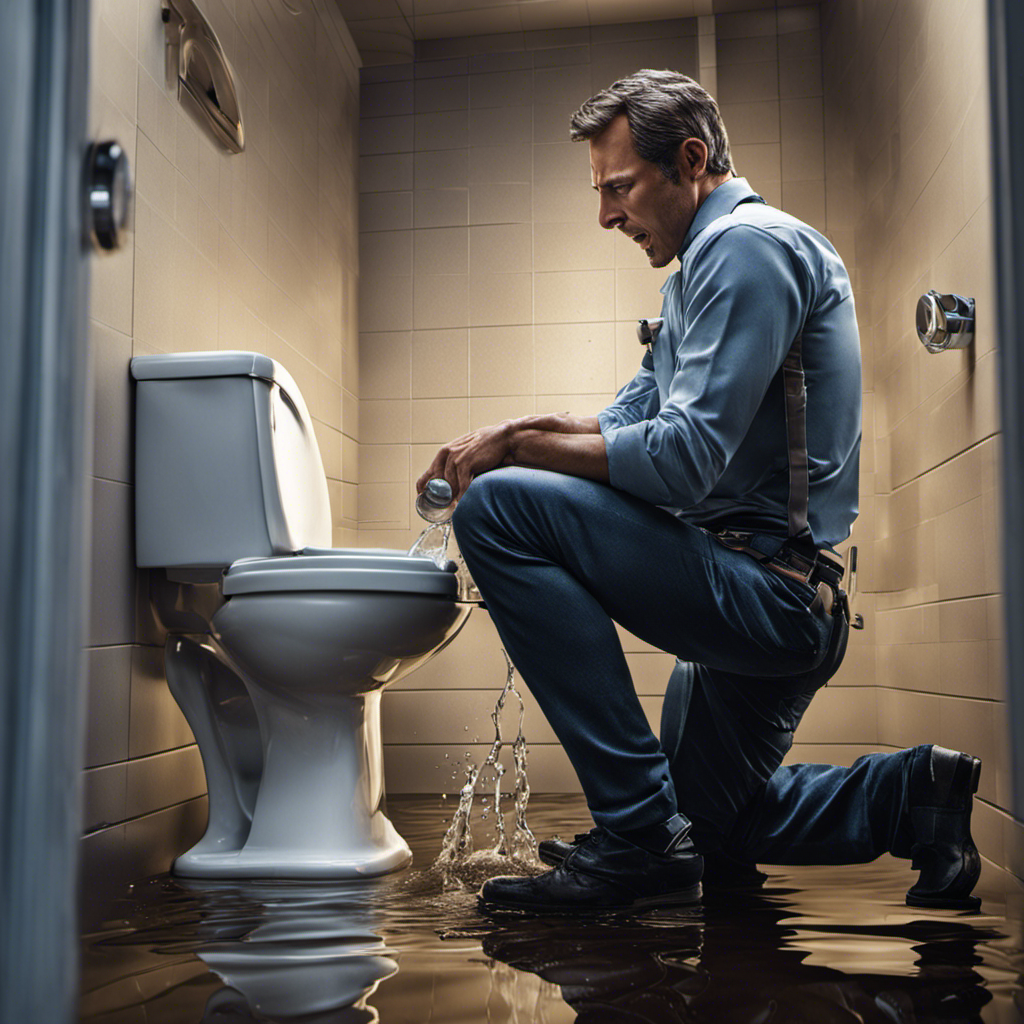I can’t stand it anymore – my toilet is always running! It’s like a marathon runner that never takes a break. But don’t worry, I’ve got you covered.
In this article, I’ll walk you through the common causes of a running toilet, how to identify the problem, and the steps to fix it. I’ll even share some tips to prevent this pesky issue from happening again.
So, let’s dive in and put an end to this never-ending race!
Key Takeaways
- A running toilet can be caused by a faulty flapper valve or a worn-out flapper, leading to leaks and an increased water bill.
- Identifying and fixing a running toilet promptly can save water and money. This can be done by replacing the worn or damaged flapper valve, turning off the water supply before replacing it, and testing the toilet after turning the water supply back on.
- Preventive measures such as regularly checking the flapper valve for wear or damage, adjusting the water level to prevent overflow, and cleaning the flapper valve can minimize the chances of a running toilet.
- If a toilet is persistently overflowing or showing signs of serious problems like continuously running water, weak flush, or leaking around the base, it is advisable to call a professional plumber. DIY fixes may be suitable for simple tasks like flapper or chain replacement and clog removal, but a plumber is needed for more complex tasks like wax ring replacement.
Common Causes of a Running Toilet
One common cause of a running toilet is a faulty flapper that needs to be replaced. The flapper is a rubber valve located at the bottom of the tank, and it is responsible for controlling the flow of water from the tank to the bowl.
Over time, the flapper can become worn out or damaged, resulting in a leak that causes the toilet to constantly run. This not only leads to toilet water wastage but also increases your water bill.
To fix this issue, you can either replace the flapper yourself or seek professional toilet repair services. It is a relatively simple and inexpensive fix that can save you money and prevent unnecessary water wastage.
How to Identify a Running Toilet
To identify a running toilet, you can start by checking the water meter for any continuous movement. If the meter is moving even when no one is using water in the house, it is a clear sign of a running toilet.
Another common sign is a constant sound of water running or hissing coming from the toilet tank. These signs indicate that water is constantly flowing into the toilet bowl, wasting precious water and increasing your water bill.
The potential issues causing a running toilet can vary, but some common culprits include a faulty flapper valve, a damaged fill valve, or a misaligned flush valve. Identifying and fixing these issues promptly can save water, money, and prevent any further damage to your toilet.
Steps to Fix a Running Toilet
If you’re experiencing a constantly flowing toilet, a common fix is to replace the flapper valve. The toilet flapper is a rubber valve that controls the flow of water from the tank into the bowl. Over time, the flapper can become worn or damaged, causing it to not seal properly and allowing water to continuously flow into the bowl. This can result in a higher water bill and waste a significant amount of water.
To fix this issue, start by turning off the water supply to the toilet. Then, remove the old flapper and replace it with a new one. Make sure to choose a flapper that is compatible with your toilet model. Once installed, turn the water supply back on and test the toilet to ensure it is no longer running. By replacing the flapper valve, you can save water and lower your water bill.
Transitioning into the next section, I will now provide you with some tips for preventing a running toilet.
Tips for Preventing a Running Toilet
Make sure you regularly check the flapper valve for any signs of wear or damage to prevent a continuously flowing toilet.
Here are three tips for preventing a running toilet and ensuring its proper maintenance:
-
Adjust the water level: Most toilets have a water level adjustment feature. Make sure the water level is set correctly to prevent overflow and minimize the risk of a running toilet.
-
Clean the flapper valve: Over time, the flapper valve can accumulate mineral deposits and debris, causing it to malfunction. Regularly clean the flapper valve to maintain its proper functioning and prevent water leakage.
-
Install water-saving devices: Consider installing water-saving devices, such as dual flush kits or adjustable flapper valves. These devices help reduce water consumption and minimize the chances of a running toilet.
When to Call a Plumber for a Running Toilet
When dealing with a persistently overflowing toilet, it’s time to call a plumber for professional assistance. While some toilet issues can be resolved with a simple DIY fix, there are certain signs that indicate a more serious problem that requires expert intervention. Here are some signs that it’s time to call a plumber for a running toilet:
| Signs of a Serious Toilet Problem | When to DIY a Running Toilet |
|---|---|
| Water continuously running | Flapper or chain replacement |
| Weak flush | Clog removal |
| Leaking around the base | Wax ring replacement |
If your toilet is constantly running, even after attempting basic fixes, it could be due to a faulty flapper or chain that needs to be replaced. Similarly, a weak flush can be resolved by removing any clogs. However, if there is leaking around the base of the toilet, it may require a wax ring replacement, which is best left to a professional plumber. Remember, it’s important to recognize the signs of a serious toilet problem and seek professional assistance when necessary.
Frequently Asked Questions
Can a Running Toilet Cause an Increase in Water Bills?
Yes, a running toilet can cause an increase in water bills. It continuously wastes water, leading to higher expenses. Moreover, it also has a negative impact on water conservation, making it important to address and fix the issue promptly.
Is It Normal for My Toilet to Make a Gurgling Sound When It’s Running?
It’s not normal for a toilet to make a gurgling sound when it’s running. This could indicate a problem with the plumbing system. Troubleshooting and identifying common causes of toilet gurgling is essential.
Can a Running Toilet Damage the Plumbing System?
A running toilet can cause damage to the plumbing system if left untreated. It’s important to address the issue promptly to avoid further complications. Toilet repair services can help identify and fix common toilet problems.
Why Does My Toilet Continue to Run After I Flush It?
When I flush my toilet, it continues to run. There are several common causes for this issue, including a faulty flapper or a stuck float. Here are some toilet repair tips to fix the problem.
Can a Running Toilet Lead to Water Waste and Environmental Concerns?
A running toilet can indeed lead to water waste, which has negative implications for water conservation efforts. Moreover, it can also have a detrimental impact on aquatic ecosystems by disrupting their delicate balance.
Conclusion
In conclusion, a running toilet is a common and frustrating problem that many homeowners face. By understanding the common causes and learning how to identify and fix the issue, you can save yourself from wasting water and money.
Remember to regularly check and maintain your toilet to prevent future running problems. Don’t let a running toilet be a constant annoyance in your life. Take action and fix it today! Your water bill and sanity will thank you.










